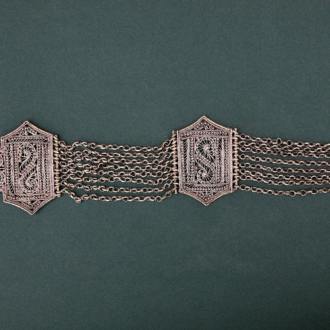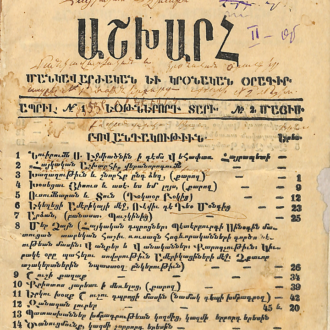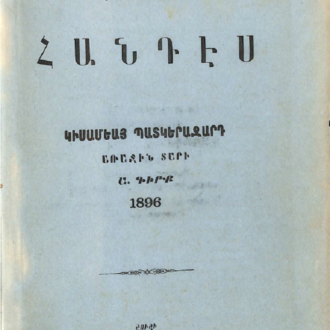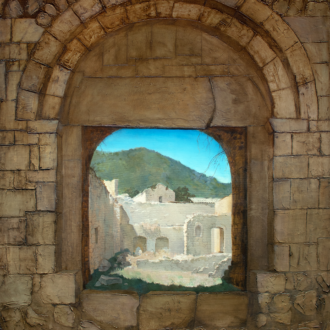Treasures of Artsakh: PART IV
Artsakh in the 19th-21st Centuries
The Armenian national costume is an integral component of the Armenian culture having existed through long periods of historical development. Each province of historic Armenia is distinguished by its costume, but shares some general features of all Armenian clothing including structure, patterns of different elements, and ways of making and wearing them.
The costume ensemble of Artsakh-Syunik was distinguished by modest dresses, luxurious jewelry, and complicated headdress. The traditional women’s costume consisted of an upper shirt (virvi halav-վիրվի հալավ) and outfit called “irekpshkani,” worn over a chemise. The upper shirt was made of red silk or calico with round neckline elongated incision with black velvet or satin, as well as sewn silver small jewelry. The skirt of “irekpshkani” consisted of three parts and it was made of dark green silk and blue or violet fabric.






![Rug “Getashen”, 1858, Artsakh, wool, AMA 1992.361 Rug “Getashen”, 1858, Artsakh, wool, AMA 1992.361.
The type of the “Jagged band” rugs is called “Getashen”. It displays five medallions and splendid floral, zoomorphic, and geometrical motifs. The slight purplish hue of the field of the rug suggests that the dyestuff source is the Armenian cochineal or Ararat scale (Porphyrophora Hamelii) known in Armenia as Vordan Karmir (Armenian: որդան կարմիր, literally "worm's red"). The rug bears an Armenian inscription: "The rug was woven in the year 1858 A[pril] 14"](https://historymuseum.am/wp-content/uploads/2023/02/A_06_Rug_Getashen_AMA1992.361-330x330.png)














